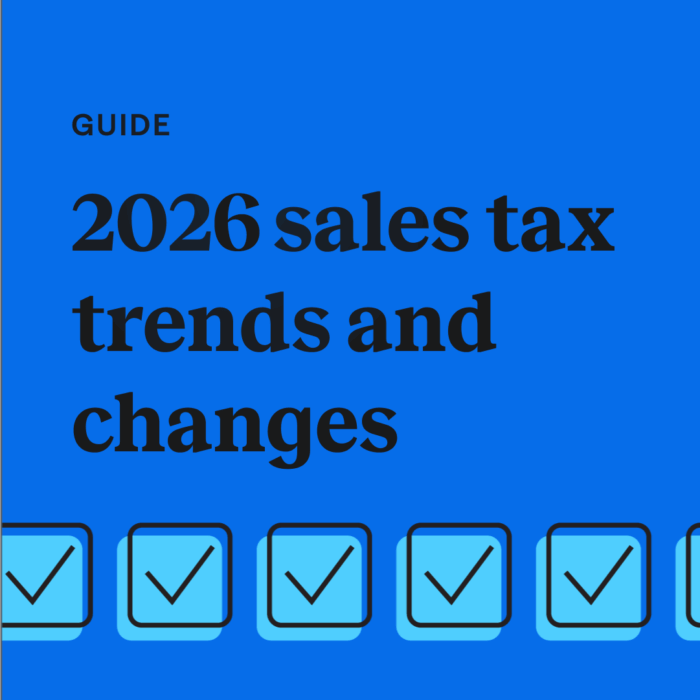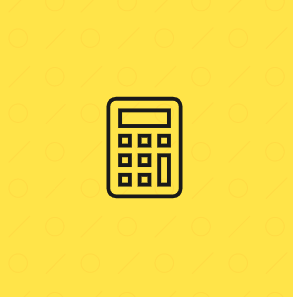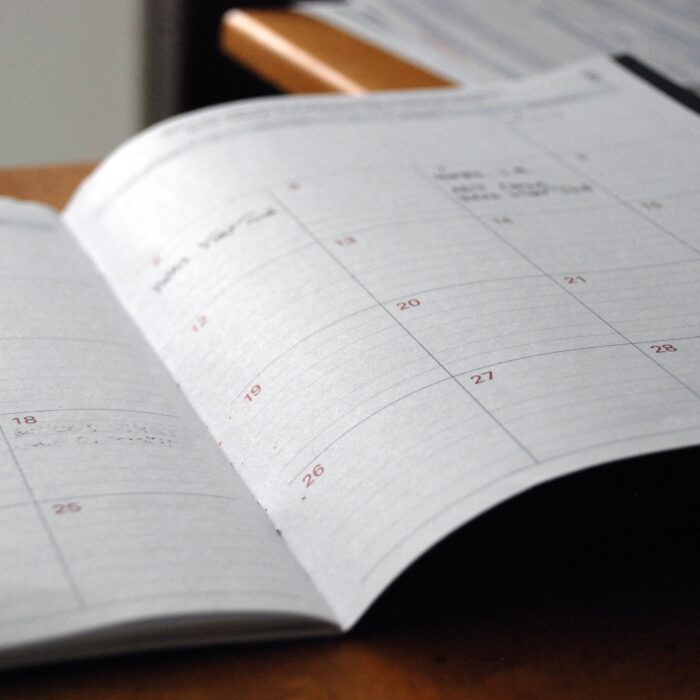How to file your quarterly estimated taxes
by January 1, 2025
Things can get busy when you’re managing an e-commerce business, but it’s important you don’t let your tax obligations fall by the wayside. As a business owner, the IRS expects you to file estimated taxes every quarter, which means you have to deal with taxes four times a year.
Filing taxes every quarter may sound like a lot of work—and it is—but if you master the art of filing your estimated quarterly taxes, you’ll reduce your workload come tax time.
Whether you’re new to e-commerce and wondering how to file your quarterly estimated taxes, or if you’re a seasoned entrepreneur looking for an efficient approach to filing estimated quarterlies, read on.
In this guide, we’ll outline the most efficient process for filing your quarterly estimated taxes, and walk you through a step-by-step example that clarifies the process.
Do you need to pay estimated quarterly taxes?
As an employee, you likely worked for someone who automatically deducted your taxes from your pay. As a self-employed individual, it’s your responsibility to set aside a portion of your income for taxes, and ensure the money gets to the IRS in a timely fashion.
Before worrying about how to calculate your estimated quarterly payments, let’s do a quick check to determine if you need to taxes on a quarterly basis at all. You will only need to pay estimated taxes on a quarterly basis if you meet the following IRS criteria.
If you plan on filing your taxes as a sole proprietor, partner, S corporation shareholder, and/or a self-employed person, and you will owe taxes of $1000 or more, you’ll generally need to make quarterly estimated tax payments. If your business is filing as a corporation, and your business will owe more than $500 in yearly taxes, you will need to make quarterly estimated tax payments.
If you don’t meet these IRS minimums, you don’t need to worry about paying estimated taxes on quarterly basis.
If you do meet these minimums, the next step is to determine how much tax you will owe each quarter.
Try TaxJar for free
TaxJar offers one platform to manage every aspect of sales tax compliance from calculations to reporting to filing. Try our sales tax compliance platform for 30 days, completely free with no obligation.
Get startedHow to calculate what you owe each quarter
To determine how much estimated tax you should pay each quarter, you’ll first need to have an idea of the income and deductions you plan to report on your tax return.
If your business has been up and running for a while, you can usually get this information from your last tax return. An efficient approach to estimating your quarterly tax payments each year is to go through this process just after you’ve filed a tax return. That way, “estimating next year’s quarterly tax payments” becomes the last step of filing your latest tax return.
If your business is brand new and you don’t have any financial data from a previous year, you can estimate this year’s income by taking the income from your best month so far, and multiplying it by twelve.
Once you’ve got these figures, you have a couple of options for calculating how much tax you will pay each quarter. The first is to pay at least 90% of what you expect to owe this year; the other is to pay 100% of what you owed last year.
You can pay 100% of your previous year’s taxes. This method is often referred to as the safe harbor rule. Even if your income grows in the current tax year, as long as you paid at least the same amount in taxes that you did in the previous tax year, you’ll avoid any penalties. If you earn significantly more in the current tax year, you’ll still have to pay to make up any difference in taxes owed, though.
Alternatively, you can pay 90% of your estimated current year tax bill. This is a good method if:
- You expect your income this year to be a little less than it was last year—assuming you’re basing this year’s estimate on last year’s figures.
- You expect your income this year to be a little less than what is projected by multiplying your best month so far times twelve.
Finally, if you earned more than $150,000 last year, you’ll need to pay 110% of what you owed in the previous year’s taxes in order to fall within the protection of the safe harbor rule.
You should choose whichever option suits your situation.
Once you’ve determined which method you’ll use, punch these these figures into the Estimated Tax Worksheet and Form 1040-ES before paying your estimated quarterly taxes to the IRS.
When to pay quarterly estimated taxes
The due dates for estimated quarterly tax payments are:
- April 15 (for payment period January 1 – March 31)
- June 15 (for payment period April 1 – May 31)
- September 15 (for payment period June 1 – August 31)
- January 15 (of the following year) (for payment period September 1 – December 31)
Note: If the due date for making an estimated tax payment falls on a Saturday, Sunday, or legal holiday, the payment will be on time if you make it on the next day that’s not a Saturday, Sunday, or legal holiday.
Due dates can creep up on you during busy periods, and missed deadlines can result in unnecessary penalties. Save these dates in your calendar now, and set up an email reminder so that you have at least two weeks notice before each quarterly deadline.
How to submit quarterly estimated tax payments
Getting the money to the IRS is pretty straightforward. You have the option to fill out a form 1040-ES and mail it, along with a check, to the IRS. Additionally, thanks to the IRS Payments Gateway, you can now choose to pay your taxes online.
Paying online, you have the option of either using your credit card, transferring cash directly from your bank account, or making a same-day wire transfer. Your payment will be confirmed immediately, without having to wait for mail to arrive or a check to clear.
If necessary, you can also use the IRS Payments Gateway to apply for a tax payment plan, or to delay a payment.
What happens when you avoid or miscalculate quarterly tax payments?
The IRS may penalize you if you don’t keep up with quarterly estimated taxpayments.
You’re likely to be dinged with a penalty if you:
- Miss quarterly estimated tax payment deadlines
- Fail to pay enough taxes each quarter
The severity of the penalty will depend on how much you owe and how long you’ve owed it to the IRS.
Do quarterly tax payments need to be in equal amounts?
Although it’s common to submit estimated quarterly tax payments in four equal installments, it’s possible that you may end up with unequal payments in the following instances:
- If last year’s overpayment was credited to your current year’s estimated tax payments
- If you don’t calculate your quarterly estimated payments until after April, when the first quarterly payment is due
- If you unexpectedly earn more money in one quarter
Case study: E-commerce Chloe’s quarterly tax payments
To clarify the process, let’s walk through a fictional example.
Chloe is a sole proprietor and e-commerce entrepreneur who began selling her handmade fashions online a few years ago. Here’s how she would calculate her quarterly estimated taxes, based on her income tax and the amount of self-employment tax she owes.
Step 1: Chloe refers to last year’s tax return
Since Chloe has been in business for a few years, she refers to last year’s tax return to check the earnings, deductions, credits, and taxes she paid in the previous year. The earnings listed on her latest tax return to estimate what her taxable income will be this year.
Step 2: Chloe uses the estimated tax worksheet
Now that she has the necessary financial figures on hand, Chloe punches these numbers into the Estimated Tax Worksheet (page 8 of IRS Form 1040-ES) to calculate the estimated total taxes she will owe for the year.
Step 3: Chloe uses form 1040-ES to pay
Having estimated the total taxes she will owe for the year, Chloe divides the total by four to determine how much she will need to pay in estimated taxes each quarter.
Because she’s hyper organized, she creates an event in Google Calendar to get a reminder two weeks before each quarterly payment deadline.
Whenever a quarterly estimated tax payment date rolls around, Chloe submits her quarterly estimated taxes electronically via the IRS Payments Gateway, keeps a record of the payment, and gets back to business.
Dealing with taxes four times a year isn’t exactly a barrel of fun, but once you’ve become familiar with the process, when you get the hang of it, the process is relatively painless. Plus, when the end of the financial year rolls around, you’ll find that you’re warmed up for tax season having already completed much of the necessary footwork.
This guest post is brought to you by our friends at Bench Accounting.








